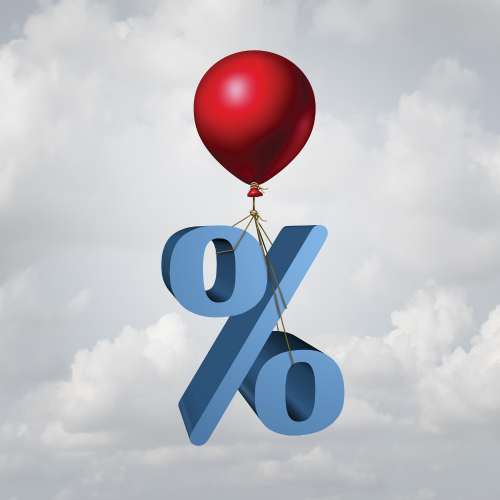New Realities: 2022 Tax Brackets Rise but So Does Inflation

Evelyn Jacks
Canada’s personal amounts and benefits will increase by 2.4% for 2022, a significant jump over past years’ rates. Canadians can now earn more before reaching the top of their tax brackets and benefit from higher income testing thresholds, too. This is a great trigger for planning, particularly for retirees. But here’s the bad news: this indexation rate does not come close to the recent rise in the cost of food, transportation and shelter.
Unfortunately, the indexation raise does not reflect a new trend for Canadian consumers: the highest inflation rate since February of 2003: 4.7% in October, following 4.4% in September.  Money is not stretching as far these days for a variety of reasons.
Money is not stretching as far these days for a variety of reasons.
According to Statistics Canada, inflation is driven by higher day-to-day prices for the basics: good, transportation and shelter costs, and those three costs account national for 62.5% of our spending. Prices are rising for all three these days, but the biggest culprit was the cost of transportation, which rose 10.1% - the biggest increase since March 2003 – driven by high energy prices (+25.%).
But the cost of meat was also on the list of prices that skyrocketed in October by 9.9%. And if it seems like the cost of bacon is through the roof, you’re not dreaming: it rose 20.2%. Labor shortages have slowed down production, the cost of feed for livestock is up and there are ongoing supply chain challenges.
Meanwhile, the Bank of Canada said expects CPI inflation to remain high for the rest of 2021, averaging 4.7%, but it does expect the rate to ease back down to 2% by late 2022. It also hinted at rising interest rates next year, which has caused prominent economists to sound alarm bells around mortgage interest rates in the future.
Financial advisors will be pressed to find returns that beat three increasing wealth eroders in 2022: taxes, inflation and on the horizon, interest costs. One place to look for savings is the tax return. hat’s where higher tax brackets adjusted for inflation can help, even if the indexation rates are lower than the rising inflation rate.
The indexation rates for tax brackets, and benefits were as follows in the past several years:
|
2019
|
2.2%
|
|
2020
|
1.9%
|
|
2021
|
1.0%
|
|
2022
|
2.4%
|
For 2022, the federal tax brackets and rates are as follows:
|
Tax Rate
|
Tax Brackets 2022
|
2021
|
2020
|
2019
|
|
15%
|
Over BPA and
under $50,197
|
Over BPA and under $49,020
|
Over BPA and under $48,535
|
Over BPA and under $47,630
|
|
20.5%
|
$50,197-$100,392
|
$98,040
|
$97,069
|
$95,259
|
|
26%
|
$100,392-$155,625
|
$151,978
|
$150,473
|
$147,667
|
|
29%
|
$155,625 - $221,708
|
$216,511
|
$214,368
|
$210,371
|
|
33%
|
Over $221,708
|
Over $216,511
|
Over $214,368
|
Over $210,371
|
Bottom line: In planning income levels for 2022, in particular pension income withdrawals, take the top of these tax brackets into account.
Additional educational resources: These tax details and strategies will be discussed in detail at the Advanced Personal Tax Update on January 19, 2021. Remember, register before December 15 for all inclusive tuition fees that include food and a hard copy of the Knowledge Bureau’s Advanced Personal Tax Update Journal.